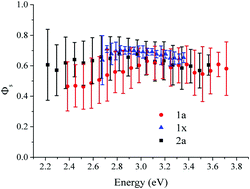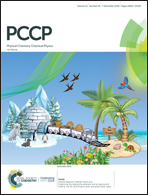Comprehensive modelling study of singlet exciton diffusion in donor–acceptor dyads: when small changes in chemical structure matter†
Abstract
We compare two small π-conjugated donor–bridge–acceptor organic molecules differing mainly in the number of thiophene rings in their bridging motifs (1 ring in 1; 2 rings in 2) with the aim of rationalizing the origin of the enhancement in the singlet exciton diffusion coefficient and length of 1 with respect to 2. By combining force field molecular dynamics and micro electrostatic schemes with time-dependent density functional theory and kinetic Monte Carlo simulations, we dissect the nature of the lowest electronic excitations in amorphous thin films of these molecules and model the transport of singlet excitons across their broadly disordered energy landscapes. In addition to a longer excited-state lifetime associated with a more pronounced intramolecular charge-transfer character, our calculations reveal that singlet excitons in 1 are capable of funneling through long-distance hopping percolation pathways, presumably as a result of the less anisotropic shape of the molecule, which favours long-range 3D transport.



 Please wait while we load your content...
Please wait while we load your content...